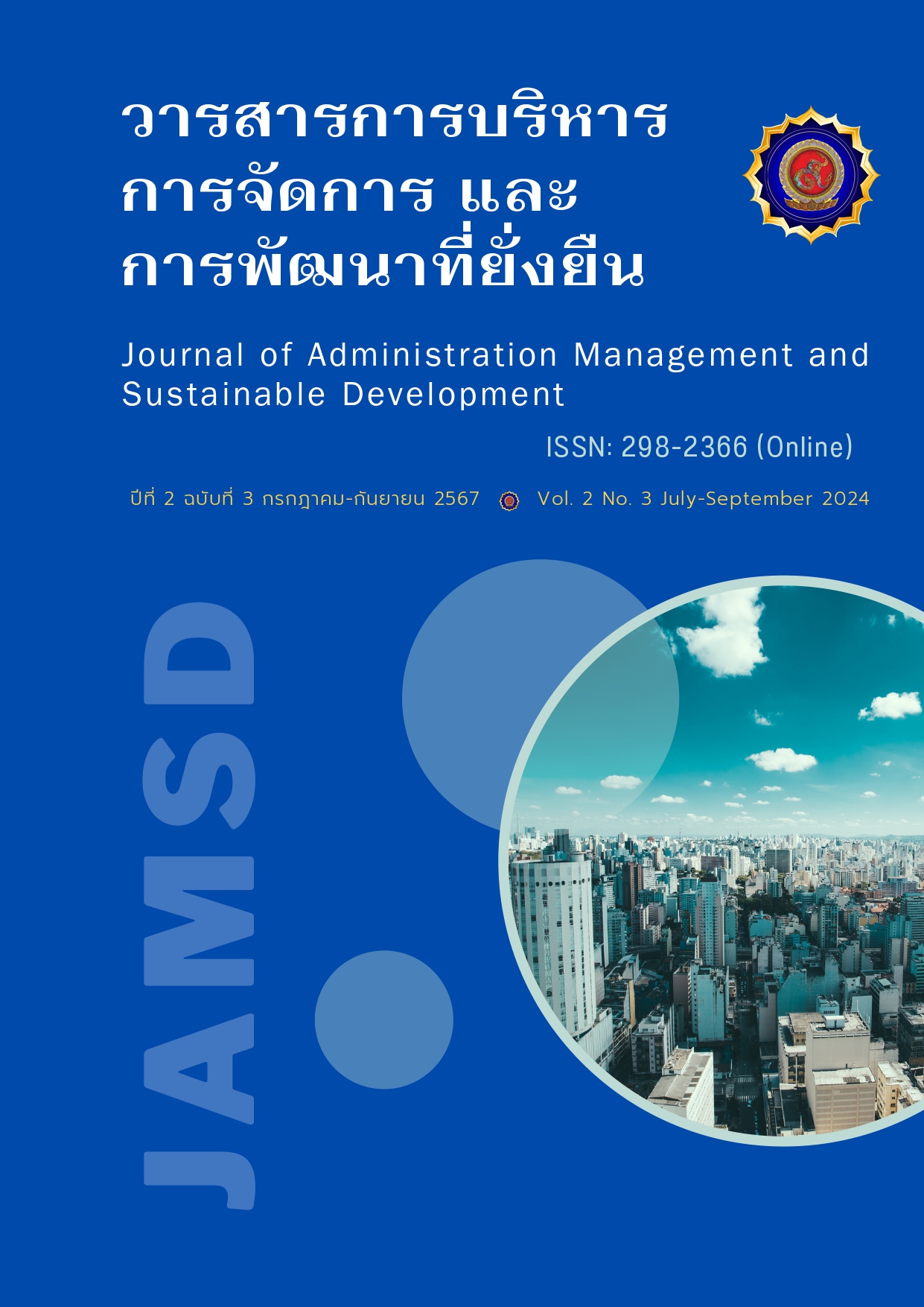The Role of innovation in digital-based bureaucratic reform
Keywords:
innovation;, bureaucracy;, technologyAbstract
This academic article seeks to explain the meaning and importance of innovation in the role of bureaucracy in the digital age. It discusses concepts and theories related to the adoption of innovation in the digital era, types of innovation, the benefits of innovation, as well as the pros and cons and strategies for integrating innovation into public administration. The goal is to understand the role of innovation that the bureaucracy has adopted to improve work efficiency and accelerate public services. Public agencies have incorporated technology into their services to make citizens' lives more convenient in the digital era. Therefore, it is crucial for government agencies or organizations to adopt new innovations to transform their work processes across all sectors of the bureaucracy. Reforming the work of the bureaucracy to align with the digital era is inevitable, as innovation presents a significant opportunity to improve the quality of government operations, enabling faster and more modern services that meet the needs of the public. However, implementing modern innovations also presents challenges and obstacles that the bureaucracy must consider in its reform decision-making. This includes improving work efficiency, reducing processing time, and ensuring data accuracy in order to provide fast and accessible public services. Innovation is the process of developing ideas using available resources or human creation. The bureaucracy has adopted the role of innovation in reforming organizational operations, but careful planning and preparation are required to achieve maximum benefit. As a result, the bureaucracy has changed its working methods, emphasizing the incorporation of private-sector concepts into public agencies, giving more importance to people and technology, and allowing the public to apply innovation knowledge to their daily lives, work, or organizational development. Given today's technological changes, it is necessary to train personnel to be knowledgeable and skilled in using technology. The bureaucracy is therefore reforming its operations by integrating innovation, which plays a crucial role in advancing the country's operations in the digital age in the technology-driven world of 4.0.
References
สำนักงานพัฒนารัฐบาลดิจิทัล. (2563). แผนพัฒนารัฐบาลดิจิทัลของประเทศไทย. กรุงเทพฯ: สำนักงานพัฒนารัฐบาลดิจิทัล.Bekkers, V. J. J. M., & Homburg, V. M. (2007). The Role of Innovation in Public Administration. Palgrave Macmillan.
Borins, S. (2014). Innovations in Governance and Public Administration: A Global Perspective. Routledge.
Brown, J. (2023). Innovation in public administration: Challenges and opportunities. Public Management Review, 25(1), 45-62.
Birkinshaw, J., Hamel, G., & Mol, M. J. (2008). Management innovation. Academy of Management Review, 33(4), 825-845.
Cameron, E., & Green, M. (2015). Making sense of change management: A complete guide to the models, tools and techniques of organizational change. Kogan Page Publishers.
Chotchai, S. (2022). Innovations in Thai public administration: Enhancing efficiency and transparency. Journal of Public Administration, 18(3), 112-127.
Christensen, C. M. (1997). The innovator’s dilemma: When new technologies cause great firms to fail. Harvard Business Review Press.
Dawes, S. S. (2016). The Role of Technology in Government and Public Administration: Key Challenges
and Opportunities. Public Administration Review, 76(2), 210-219.
Deming, W. E. (1986). Out of the crisis. MIT Center for Advanced Educational Services.
Freeman, C., & Soete, L. (1997). The Economics of Industrial Innovation. Routledge.
Gurstein, M. (2019). "The Role of Digital Technology in Social Change and Public Administration: Opportunities and Challenges". Information Technology for Development, 25(3), 431-445.
Heeks, R. (2018). Digital government: Technology and public sector reform. Routledge.
Hiatt, J. M. (2006). ADKAR: A model for change in business, government, and our community. Prosci Research.
Kettunen, P., & Kallio, J. (2020). Innovation and digitalization in public administration.
Kim, S. (2019). Digital government and public sector innovation: New approaches to public administration.
Kotter, J. P. (1996). Leading change. Harvard Business Review Press.
Kshetri, N. (2020). The Emerging Role of Digital Technologies in Public Administration. In Digital Transformation and Global Society (pp. 11-23). Springer.
Lewin, K. (1951). Field theory in social science: Selected theoretical papers. Harper & Brothers.
Long, Y. (2021). "Challenges and Risks of Implementing Technological Innovations in Public Sector
Organizations". Journal of Public Administration Research and Theory, 31(1), 15-29.
Margetts, H., & Dunleavy, P. (2013). The Future of Public Services: How to Innovate in a Digital World. Oxford University Press.
Mergel, I. (2016). Social media and the public sector: Governance, participation, and transparency. Routledge.
Mergel, I., Edelmann, N., & Haug, N. (2019). The Role of Digital Innovation in the Public Sector: A Systematic Review. Public Administration Review, 79(6), 923-934.
Mulgan, G. (2012). The Locust and the Bee: Predators and Creators in Capitalism's Future. Princeton University Press.Mulgan, G. (2012). The Locust and the Bee: Predators and Creators in Capitalism's
Osborne, S. P., & Brown, K. (2005). Managing change and innovation in public service organizations. Routledge.
Osborne, S. P., & Brown, K. (2013). Innovation in Public Services: How to Create and Sustain Innovation in Public Sector Organizations. Routledge.
Peters, B. G., & Wooldridge, J. (2022). The future of public service: Digitalization and beyond. Government Studies Journal, 29(2), 123-136.
Phan, T. (2021). Digital Innovation and Public Administration: Impacts and Strategies. Public Administration Review, 81(4), 564-579.
Powell, W. W., Koput, K. W., & Smith-Doerr, L. (1996). Interorganizational collaboration and the local search for innovation. Administrative Science Quarterly, 41(1), 116-145.
Routledge. Moon, M. J., & Norris, D. F. (2019). Digital era governance: IT corporations, the state, and e-government. Routledge.
Schein, E. H. (2010). Organizational culture and leadership. Jossey-Bass.
Smith, A. (2021). Reducing costs through digital transformation in government sectors. Public Administration Quarterly, 38(3), 201-215.
Smith, S. R. (2009). Public service innovation: A critical overview. Public Administration Review, 69(2), 182-192.
Sutthipong, N. (2023). Innovation in Public Administration: Enhancing Efficiency and Transparency in the Digital Era. Public Sector Innovation Journal, 12(2), 45-63.
Thompson, L. (2020). Enhancing efficiency in government through innovation and automation. Journal of Public Sector Innovation, 15(4), 98-115
UNDP. (2020). Digital transformation for development. United Nations Development Programme.
Williams, T. (2002). Modelling complex projects. John Wiley & Sons.
Wong, K. (2022). Harnessing Digital Innovation in Public Administration: Strategies and Challenges. Journal of Public Sector Innovation, 15(3), 78-92.






